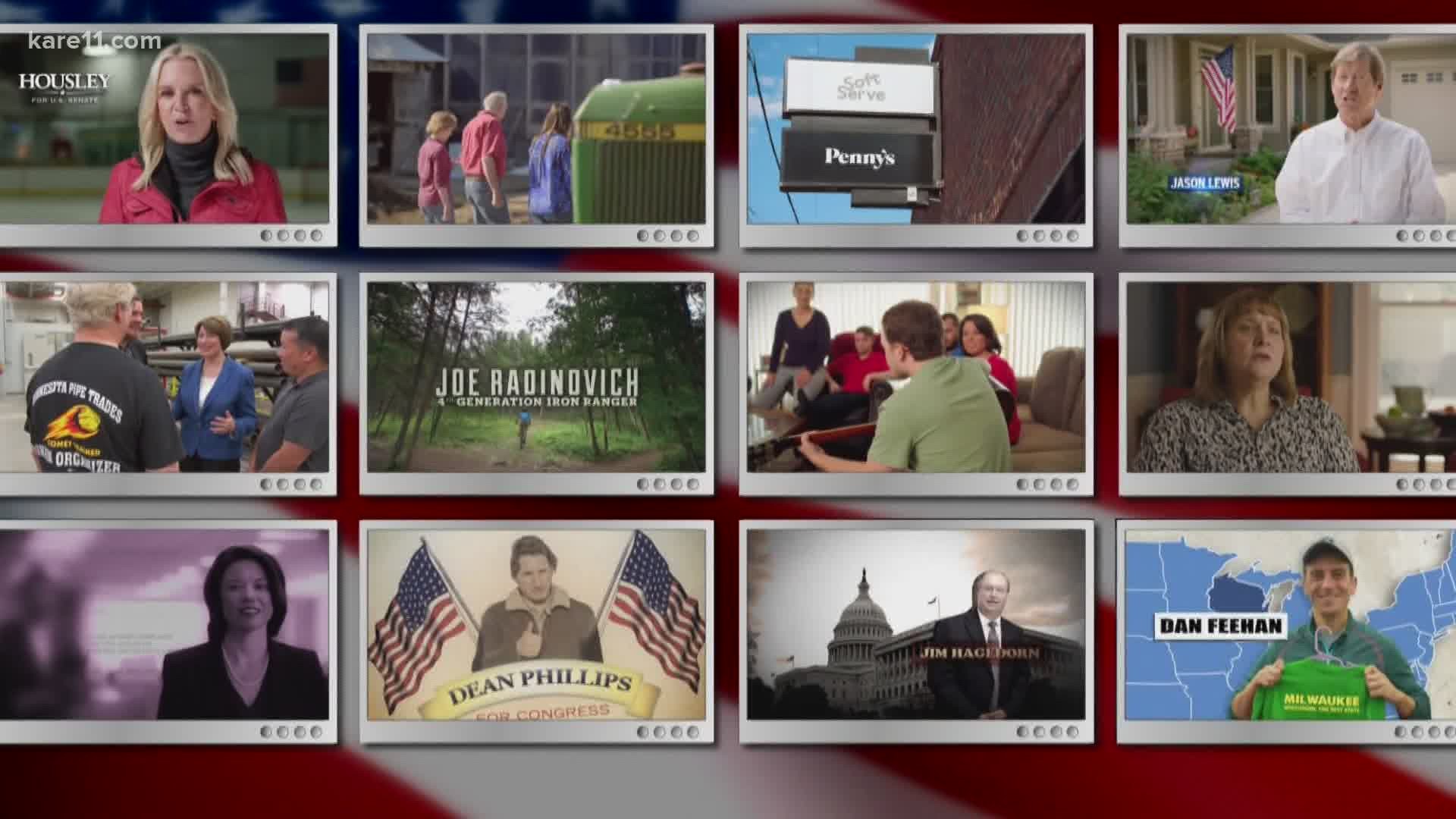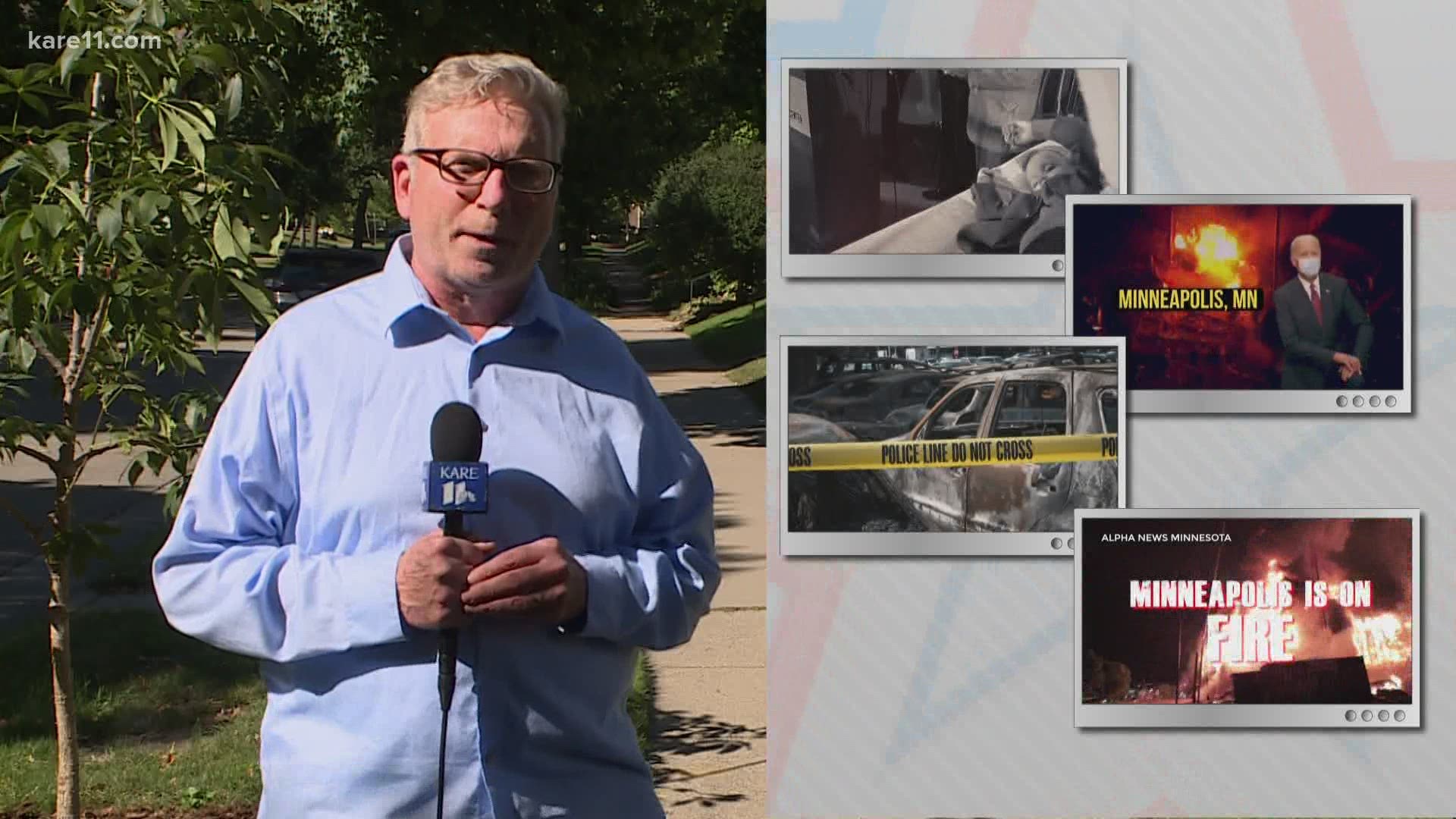MINNEAPOLIS — The political advertising race that normally starts after Labor Day in Minnesota is already up and running. Viewers are seeing ads for both major presidential contenders, some congressional candidates as well as political action committees looking to sway voters.
The Biden campaign has reportedly reserved $3.8 million in advertising slots in Minnesota and launched four new ads this week. The Trump campaign has reserved $14 million. Those numbers could go up or down, depending on how tight the race is here relative to other battleground states.
Viewers often ask why TV stations continue to run and ad even after our news department reports that the ad is misleading or false. The simple answer is that we have no choice.
Federal law requires broadcasters to sell time to candidates without regard to content. We're licensed by the federal government to scarce public airways, and are, therefore, required to adhere to Uncle Sam's rules.
"If the ad comes from a campaign broadcast stations have to run it as is. They can't censor it for any reason whatsoever," Christopher Terry, a University of Minnesota expert on campaign advertising law, told KARE.
"If the ad comes from an outside group, like a political party or an interest group of a Super PAC, then the stations can make editorial decisions about whether or not to run the ads."
Even those PAC ads are rarely rejected. And broadcasters can charge political action committees the same rates as other commercial advertisers. But the pricing for candidates' ads is also controlled by federal regulations.
Candidates must be offered the lowest unit price for an ad, the lowest price any advertiser has paid for a particular time slot in the preceding year.
"Candidate campaigns have the ability to buy at a much lower rate than would be sold for commercial time for businesses such as restaurants, appliance stores or car dealerships," Terry explained.
"It’s called the lowest unit rate. That's the lowest rate charged for an ad in the same time slot in the past calendar year."
Candidate ads are required to include a recording of candidates saying in their own voices who they are and attesting they approve of the ad.
Broadcasters aren't compelled to sell airtime to state and local candidates, but if they do accept an ad from one of those candidates, they must also accept ads from the opposition as well.
In addition to the presidential sweepstakes there are competitive races for US Senate, and at least four of the state's seats in Congress.
The last Republican candidate to capture Minnesota's electoral votes was then-President Richard Nixon in his 1972 re-election campaign. In 2016, then-candidate Donald Trump lost Minnesota to Hillary Clinton by only one a half percentage points, even though he only made one stop here in the final days.
This time the incumbent has a robust ground game in the North Star State and appears willing to invest both time and money here. The Trump Campaign has criticized former Vice President Joe Biden and his running mate, Sen. Kamala Harris, for not visiting Minnesota in person yet.
Sen. Harris told KARE the Democratic standard bearers are trying to balance their desire to be around supporters with the desire to keep them from becoming infected with COVID-19 at a political gathering.
Dr. Jill Biden and Donald Trump Jr. will both visit Minnesota on Wednesday, Sept. 9.



